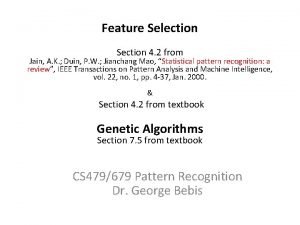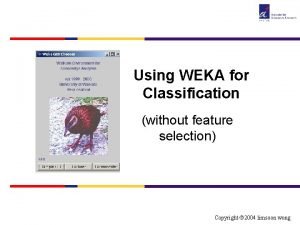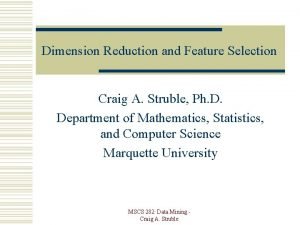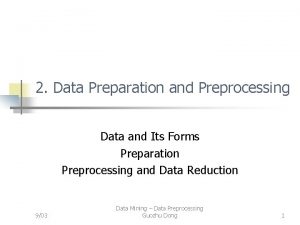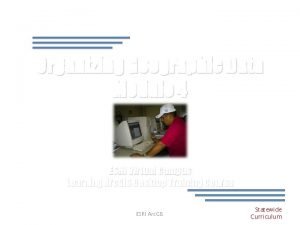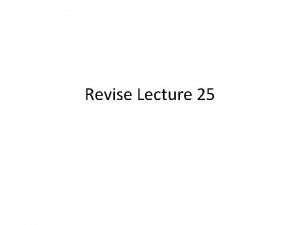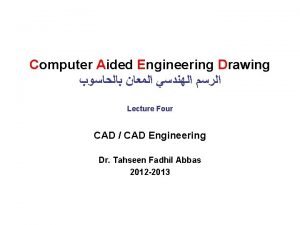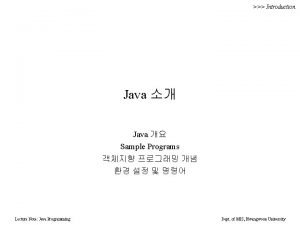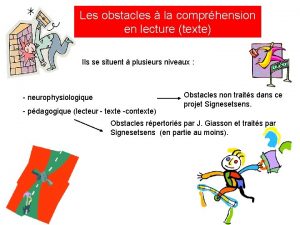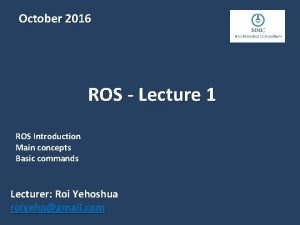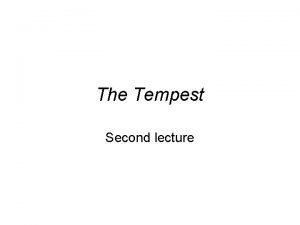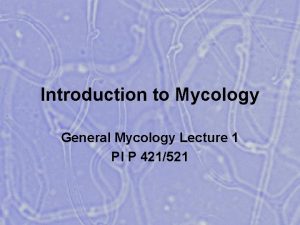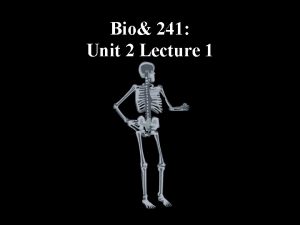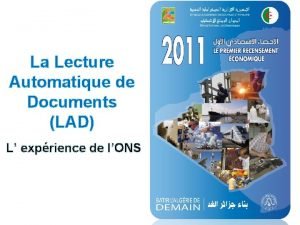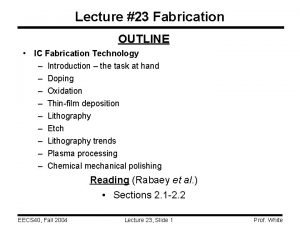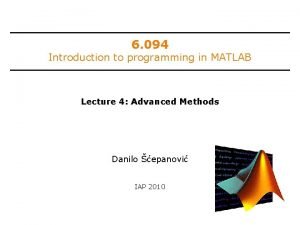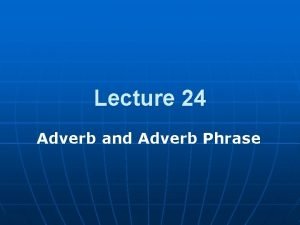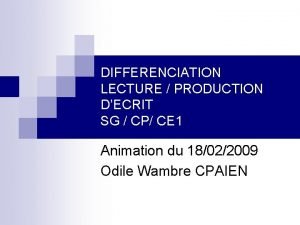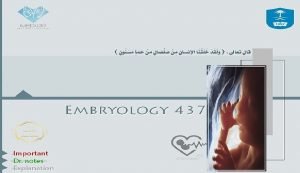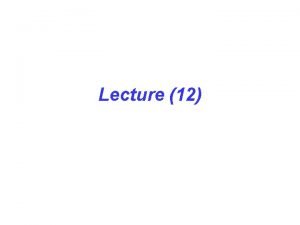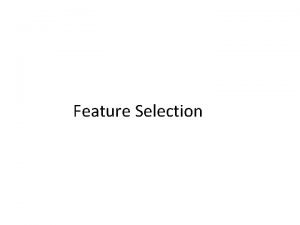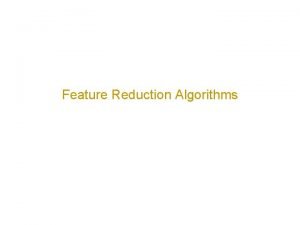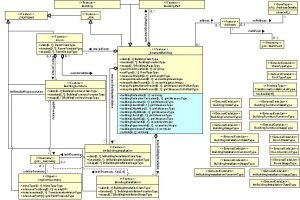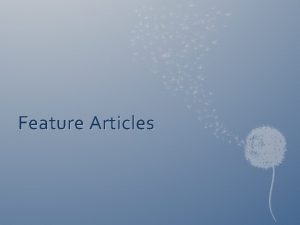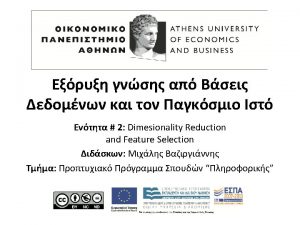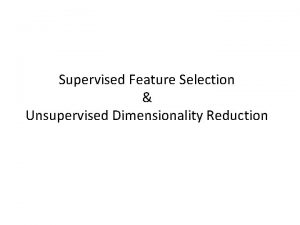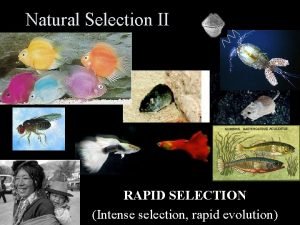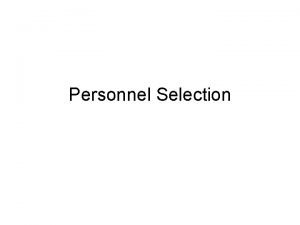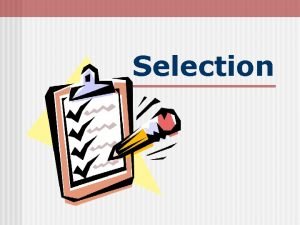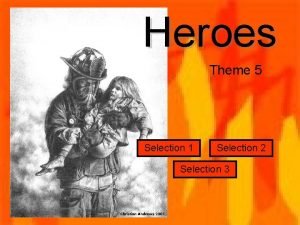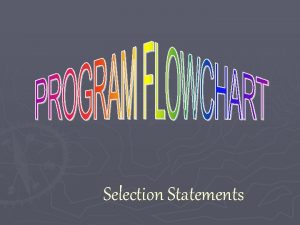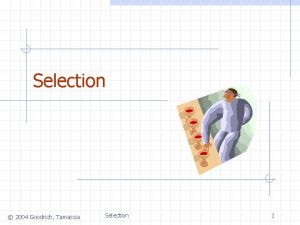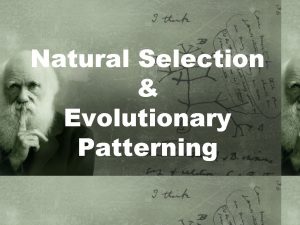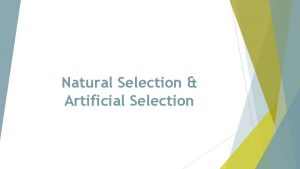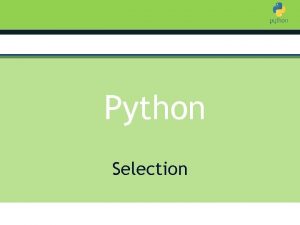Lecture 23 Feature Selection 1 What is Feature









































- Slides: 41

Lecture 23: Feature Selection 1

What is Feature Selection? • Feature selection (variable selection, attribute selection…) • Select a subset of relevant predictors for model construction • Remove redundant or irrelevant features • Reasons for Feature selection • Simplification of models to make them easier to interpret • Shorter training times • Enhanced generalization by reducing overfitting (reduction of variance) 2

What is Feature Selection? • Feature selection is interactive • Features can or cannot be selected due to several factors • e. g. , statistical performance, explanatory power, legal reasons, etc. • Analysts write low-level code • In R/Python • R/Python libraries for standard feature selection tasks 3

RELs and ROPs • REL = R-Extension Layers • Almost all db engine ships a product with some R extension • • Oracle – ORE (Oracle R Enterprise) IBM – System. ML (declarative large scale ML) SAP – HANA Hadoop/Teradata – Revolution Analytics • ROP = REL Operations • Matrix-vector multiplication or determinants • Scaling ROPs is a recent industrial challenge 4

ROP Optimization Limitations • Missed opportunities for reuse and materialization • Selecting materialization strategy is difficult for an analyst • Depends on the reuse opportunities, error tolerance, data size, parallelism • Will vary across datasets for the same task 5

Key ideas • Subsampling • Transformation materialization • Model caching 6

Columbus • Support feature selection (FS) dialogue • Identify and use existing and novel optimizations for FS workloads as data management problems • Cost-based optimizer 7

Columbus • Compiles and optimizes an extension of R for FS • Compiles this language into a set of REL ops • Compiles into the most common ROPs 8

Columbus programs • FS program as a set of high-level constructs • Language is a superset of R 9

Data Types Three major data types • A data set • Relational table R(A 1, … Ad) • A feature set F • Subset of attributes • A model for a feature set • Vector that assigns each feature a real-valued weight 10

Operations 11

Data Transform • Standard data manipulations to slice and dice • Select, join, union • Columbus is schema aware and aware of the cardinality of these operations • Operations executed and optimized directly using a standard RDBS or main-memory engine • A data frame in R is used to store data tables. List of vectors of equal length • Frames can be interpreted either as a table or an array. • Move from one to another freely 12

Evaluate • Obtain various numeric scores • Given a feature set including descriptive scores for the input feature set • E. g. , mean, variance, pearson correlations, cross-validation error, and Akaike Information Criterion • Columbus can optimize these calculations by batching several together 13

Regression • Obtain a model given a feature set and data • e. g. , models trained by using logistic regression or linear regression • The result of a regression operation is often used by downstream “explore” operations, which produces a new feature set based on how the previous set performs • These operations take a termination criterion • # of iterations or error criterion 14

Explore • Enable an analyst to traverse the space of feature sets • Optimizations leverage the fact that we operate on features in bulk 15

Basic Blocks • A user’s program is compiled into a DAG with two types of nodes • R functions • Opaque to Columbus • Basic blocks • Unit for optimization • Tasks 16

Task 17

Task and Basic Block 18

Example 19

Example 20

Executing a Columbus program 21

Executing a Columbus program 22

Executing a Columbus program 23

Optimizer 24

A Single, Linear Basic Block 25

Classical DB Optimizations 26

Lazy and Eager strategies 27

Sampling-based Optimizations 28

Naïve Sampling 29

Coresets 30

Coresets 31

Transformation-Based Optimizations: QR 32

QR in Columbus 33

Transformation-Based Optimizations/QR 34

Transformation-Based Optimizations/QR 35

Warm-starting by Model Caching 36

Warm-starting by Model Caching 37

Multi-block Optimization 38

Multi-block Logical Optimization 39

Cost-based Execution 40

Conclusion 41
 01:640:244 lecture notes - lecture 15: plat, idah, farad
01:640:244 lecture notes - lecture 15: plat, idah, farad What is exponential growth in ecology
What is exponential growth in ecology Procedure of pure line selection
Procedure of pure line selection Natural selection vs artificial selection
Natural selection vs artificial selection Natural selection vs artificial selection
Natural selection vs artificial selection Balancing selection vs stabilizing selection
Balancing selection vs stabilizing selection Difference between continuous and discontinuous variation
Difference between continuous and discontinuous variation Two way selection and multiway selection in c
Two way selection and multiway selection in c Similarities
Similarities Disruption selection
Disruption selection Two way selection and multiway selection in c
Two way selection and multiway selection in c K selection r selection
K selection r selection Sequential feature selection
Sequential feature selection Weka feature selection
Weka feature selection Information gain feature selection
Information gain feature selection Information gain feature selection
Information gain feature selection Data preparation and preprocessing
Data preparation and preprocessing Feature dataset vs feature class
Feature dataset vs feature class Isolated feature combined feature effects
Isolated feature combined feature effects Fuzzy logic lecture
Fuzzy logic lecture Features of a cheque
Features of a cheque Engineering drawing fillet
Engineering drawing fillet Foundation engineering lecture notes
Foundation engineering lecture notes Java lecture
Java lecture Phlebotomy lecture
Phlebotomy lecture Les obstacles de la lecture
Les obstacles de la lecture Ros lecture
Ros lecture What is a harmonic wave in physics
What is a harmonic wave in physics Bioinformatics lecture
Bioinformatics lecture Prospero
Prospero Glomeromycota
Glomeromycota Femur
Femur Https://slidetodoc.com
Https://slidetodoc.com Lad lecture automatique de document
Lad lecture automatique de document Ic fabrication technology
Ic fabrication technology Matlab lecture
Matlab lecture Theology proper lecture notes
Theology proper lecture notes Lecture adverb
Lecture adverb Microprocessus en lecture
Microprocessus en lecture At the end of the lecture
At the end of the lecture Shape memory alloys lecture notes
Shape memory alloys lecture notes Tarsals lecture
Tarsals lecture












